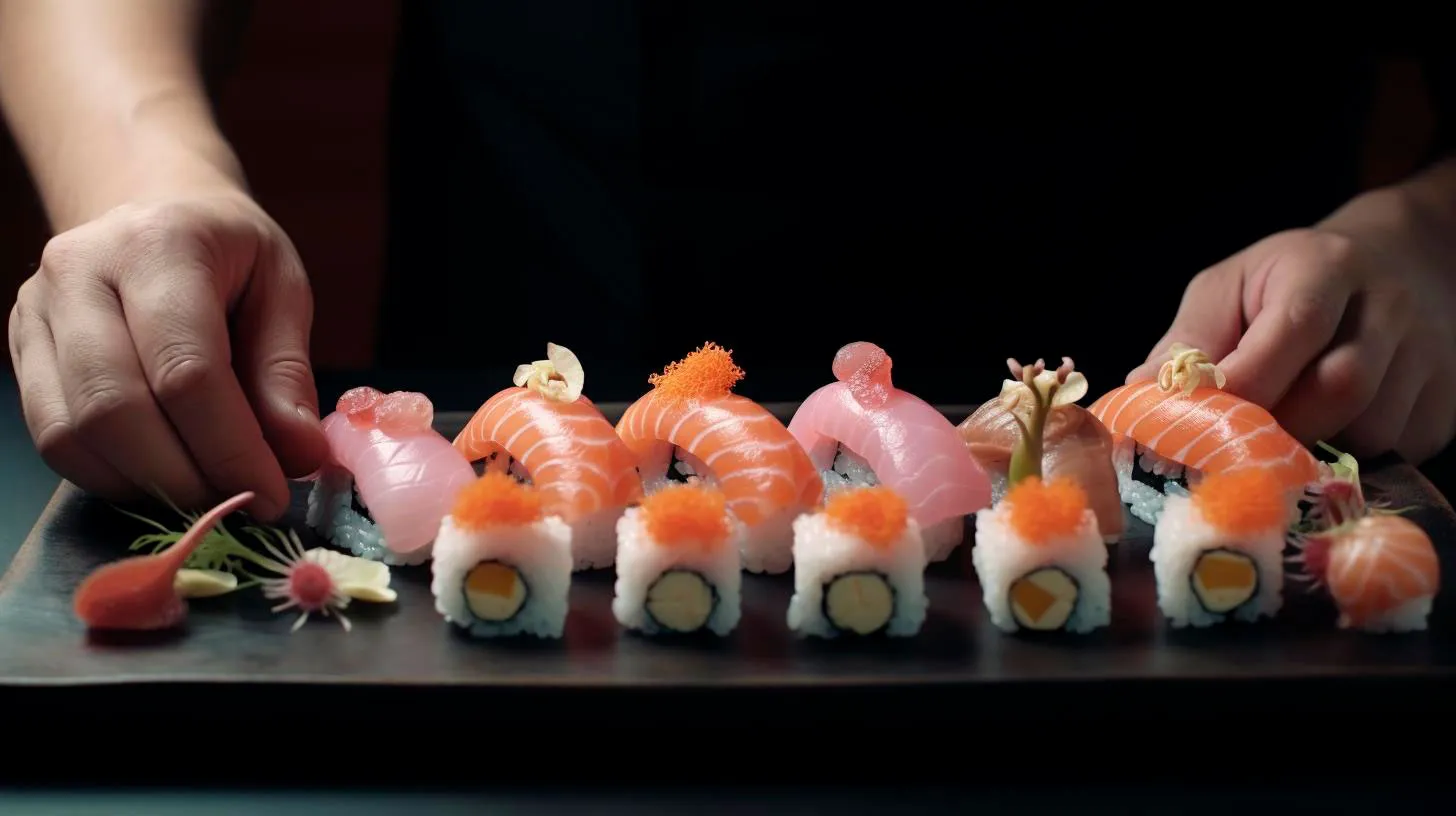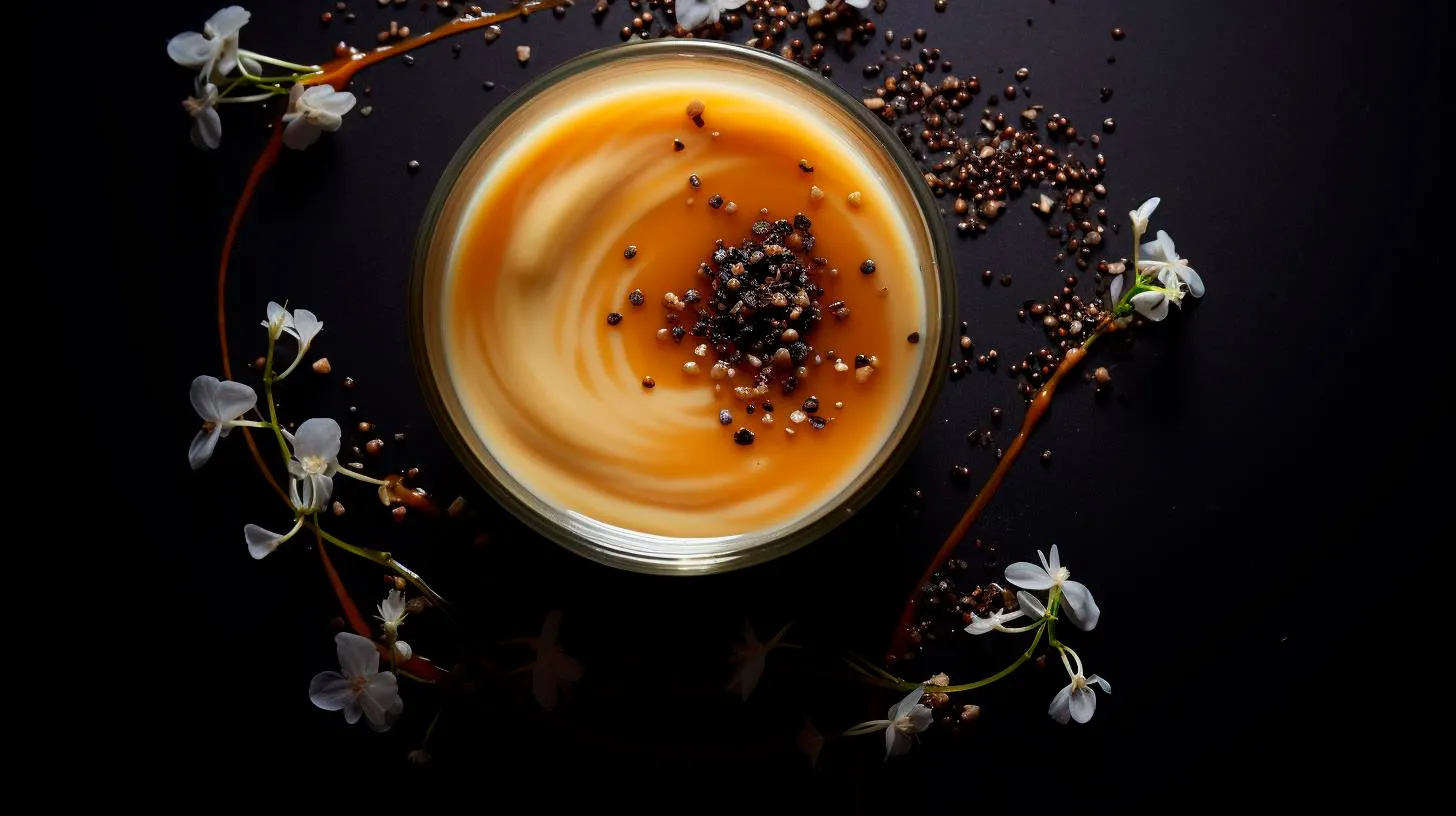Unveiling the Impact of Sushi Knife Quality on Taste
Let’s explore why investing in a high-quality sushi knife is absolutely crucial.
The Role of the Sushi Knife
Before we dive deeper, let’s first understand the crucial role of a sushi knife. Unlike regular kitchen knives, a sushi knife, also known as a yanagiba, is specifically designed to slice sushi-grade fish and create precise cuts that enhance both the taste and presentation of sushi.
A sushi knife’s long, slender blade and single bevel edge allow for clean cuts through delicate fish without crushing the flesh or disturbing the fibers. This precision contributes to the overall texture and mouthfeel of each sushi piece.
The Impact on Taste
Now, let’s explore how sushi knife quality directly influences the taste of your favorite sushi rolls:
1. Clean and Smooth Cuts
A high-quality sushi knife ensures clean, smooth cuts by effortlessly gliding through the fish. This even distribution of force prevents any tearing or ripping of the flesh. As a result, the delicate flavors within the fish remain intact, creating a more enjoyable and refined taste experience.
Key takeaway: Clean cuts preserve flavor integrity.
2. Precise Slicing Techniques
Professional sushi chefs hone their skills in precise slicing techniques, which are only possible with the right tools. The sharpness and balance of a quality sushi knife enable chefs to create consistent slice thickness, enhancing the visual aesthetic and ensuring equal distribution of flavors across each piece.
Key takeaway: Precision promotes balanced flavor distribution.
3. Maintaining Fish Texture
The exceptional craftsmanship of a superior sushi knife is geared towards preserving the natural texture of the fish. By gently slicing through the flesh, rather than compressing it, the fish retains its original smoothness and springiness. This textural integrity greatly influences the overall sushi experience.
Key takeaway: Texture plays a vital role in taste perception.
4. Flavor Extraction Control
When exceptional sushi knives are used, skilled chefs can control the amount of pressure applied during cutting. This control directly impacts the release of flavors from the fish. By adjusting the pressure, chefs can either enhance or suppress certain flavor profiles, creating a harmonious blend of tastes for a memorable sushi experience.
Key takeaway: Proper knife control enhances flavor nuances.
The Advantages of Premium Sushi Knives
Now that we understand how sushi knife quality can elevate the taste of our sushi, let’s explore the advantages of investing in premium sushi knives:
- Superior Blade Material: High-quality sushi knives are crafted from top-notch materials such as high-carbon steel or Damascus steel, ensuring exceptional strength, durability, and sharpness.
- Longevity: Premium sushi knives are designed to last a lifetime with proper care, making them a worthwhile investment for sushi enthusiasts and professionals alike.
- Ergonomic Handle Design: Comfortable handles on premium sushi knives allow for prolonged use without causing fatigue, providing chefs with optimal control and precision.
- Ease of Maintenance: Quality sushi knives are relatively easy to maintain and sharpen, extending their lifespan and ensuring peak performance.
Conclusion
As we conclude our dive into the world of sushi knife quality, we are reminded of the undeniable impact it has on the taste of our favorite sushi dishes. Clean cuts, precise slicing techniques, maintenance of fish texture, and flavor extraction control all contribute to the overall sensory experience.
By investing in a premium sushi knife with exceptional quality and craftsmanship, you elevate your sushi game to new heights. Embrace the joy of culinary artistry with the right tool in hand, and savor each bite of sushi with ultimate satisfaction.
The Role of Sharpness in Enhancing Flavor
In this article, we will explore the significance of sharpness in enhancing flavor and how it impacts our culinary experiences.
The Science Behind Sharpness
Sharpness is primarily associated with taste perceptions like sourness and acidity. These taste qualities are detected by the taste buds on our tongues. When certain substances (such as acids) bind to our taste receptors, nerve impulses are sent to our brain, allowing us to perceive these flavors. The degree of sharpness is determined by the concentration of acids in a particular food or beverage.
Sharpness goes hand in hand with balance. While too much acidity can be overwhelming and unpleasant, the right amount can bring harmony to a dish. It can provide a contrasting element to other tastes, such as sweetness or richness, leading to a more well-rounded flavor profile.
The Enhancing Power of Sharpness
- Contrast: Sharpness provides a contrast to other flavors in a dish, helping to create a more dynamic and interesting taste experience.
- Brightness: Sharpness adds a bright, lively quality to food, making it feel fresh and invigorating.
- Palate Cleansing: Sharp flavors help cleanse the palate, preparing it for the next bite or sip.
- Highlighting Ingredients: Sharpness can bring out the natural flavors and nuances of ingredients, allowing them to shine.
Shraddha Maheshwari, a renowned nutritionist, states that sharpness is not limited to enhancing taste alone. It can also affect the overall eating experience by stimulating the production of saliva and activating the taste buds. This can make us more mindful and attentive to the flavors we are experiencing.
Sharpness in Culinary Applications
Now, let’s dive into some examples of how sharpness is utilized in culinary applications:
Vinegars:
Vinegars are widely used to add sharpness to various dishes. From salad dressings to marinades, the acidity in vinegars like apple cider vinegar or balsamic vinegar adds a tangy, refreshing note.
Citrus Fruits:
Oranges, lemons, and limes are known for their sharpness, primarily due to their high citric acid content. The zesty, tart flavors of these fruits enhance a wide range of dishes and beverages, from cocktails to desserts.
Fermented Foods:
Fermented foods like sauerkraut, kimchi, and pickles provide a delightful sharpness. The fermentation process produces lactic acid, which gives these foods their tangy taste. Additionally, the probiotics found in fermented foods have been attributed to several health benefits.
Artisanal Cheeses:
Sharp cheeses, such as aged cheddar or Gorgonzola, are beloved for their intense, piquant flavors. The sharpness in these cheeses develops over time as certain bacterial cultures break down the proteins, resulting in the release of flavorful compounds.
Key Takeaways
Sharpness plays a crucial role in enhancing flavor and can transform an ordinary dish into a memorable culinary experience. Here are some key takeaways:
- Sharpness adds dimension and contrast to flavors, making them more interesting.
- It can provide a fresh and invigorating quality to food and beverages.
- Sharp flavors contribute to palate cleansing, preparing the taste buds for the next bite.
- Sharpness can bring out the best in ingredients, showcasing their natural flavors.
So, next time you savor a tangy fruit or pair a sharp cheese with a crusty bread, remember the important role that sharpness plays in enhancing your culinary adventures.
The Crucial Link: Sharpness and the Deliciousness of Sushi
But have you ever wondered about the role that sharpness plays in enhancing the flavors of this delectable dish? In this article, we will delve into the crucial link between sharpness and the deliciousness of sushi.
The Art of Sushi Making
Sushi is not just food; it is an art form that requires precision and attention to detail. From the selection of the freshest fish to the presentation on the plate, each step in the sushi-making process contributes to its overall taste and aesthetics.
One of the most important tools in a sushi chef’s arsenal is the knife. A sharp knife is absolutely essential for slicing through delicate ingredients with finesse. The blade of a sushi knife is usually made from high-quality stainless steel, which enables the chef to achieve clean cuts without compromising the integrity of the ingredients.
The Role of Sharpness in Cutting Technique
When it comes to sushi, the cutting technique used by the chef is crucial. A skilled sushi chef knows how to slice the fish against the grain, allowing for optimal flavor release. The sharpness of the knife plays a significant role in this process.
A blunt knife can crush the delicate fish fibers, resulting in a less desirable texture and taste. On the other hand, a razor-sharp knife effortlessly cuts through the fish, preserving its freshness and natural flavors. This attention to detail is what sets sushi apart from other types of cuisine.
The Advantages of Sharp Knives in Sushi Making
Now that we understand the importance of sharpness in sushi-making, let’s explore the advantages of using sharp knives in this culinary art:
- Enhanced flavor: A sharp knife ensures that the fish is cut cleanly, which helps to preserve its delicate flavors.
- Precise cuts: The sharpness of the knife allows for precise and consistent cuts, resulting in evenly portioned sushi pieces.
- Efficiency: With a sharp knife, a sushi chef can work more efficiently, saving time and effort in the preparation process.
- Safety: Contrary to popular belief, a sharp knife is safer to use in the kitchen. It requires less force to cut through ingredients, reducing the risk of slips and accidents.
Key Takeaways
As sushi enthusiasts, we can truly appreciate the intricate details that go into creating this exquisite dish. From the selection of fresh ingredients to the mastery of cutting techniques, every element contributes to the overall taste and presentation of sushi. The sharpness of the knife is an integral part of this process, allowing chefs to create precise cuts that enhance the flavors and textures of the fish. Remember these key takeaways:
- A sharp knife is essential in the art of sushi making.
- The cutting technique used by the chef impacts the taste and texture of sushi.
- Sharp knives offer enhanced flavor, precise cuts, efficiency, and safety benefits.
Next time you indulge in a plate of sushi, take a moment to appreciate the skillful craftsmanship that goes into each piece. And if you’re ever inspired to try your hand at making sushi at home, ensure you have a sharp knife to elevate your culinary experience. Happy sushi making!
Exploring the Key Role of Knife Quality in Perfecting Sushi Flavor
In this article, we will delve into the importance of knife quality in perfecting sushi flavor.
The Significance of Knife Quality
When it comes to sushi preparation, the knife is more than just a tool. It is an extension of a sushi chef’s skill, precision, and artistry. The knife quality can greatly impact the taste, texture, and overall presentation of the sushi. Let’s explore some key reasons why knife quality matters:
- Precision and Sharpness: A high-quality sushi knife maintains an unparalleled level of precision and sharpness. This allows the sushi chef to make clean cuts through the fish and other ingredients, ensuring consistent thickness and shape.
- Less Damage to Ingredients: A dull or low-quality knife can cause unnecessary damage to the delicate fish and other ingredients used in sushi. This can result in altered flavors and compromised textures, ultimately affecting the overall dining experience.
- Enhanced Presentation: A well-crafted sushi knife enables chefs to produce elegant and visually appealing slices. Each piece of sushi becomes a work of art, enhancing the overall presentation and elevating the dining experience.
The Anatomy of a High-Quality Sushi Knife
Now that we understand the importance of knife quality, let’s take a closer look at the anatomy of a high-quality sushi knife:
- Blade: A sushi knife typically has a single bevel blade made from high-carbon steel. This type of blade allows for precise cuts and easy sharpening, ensuring the utmost precision when preparing sushi.
- Handle: The handle of a sushi knife is usually made of wood, providing a comfortable grip and allowing for better control and maneuverability.
- Weight and Balance: A good sushi knife should have the perfect balance and weight distribution. This ensures that the knife feels comfortable and steady in the chef’s hand, reducing the risk of accidents and fatigue during long hours of preparation.
Key Takeaways
As we conclude our exploration into the key role of knife quality in perfecting sushi flavor, let’s recap the key takeaways:
- Knife quality plays an essential role in enhancing the taste, texture, and presentation of sushi.
- A high-quality sushi knife offers precision, sharpness, and minimal damage to ingredients.
- The anatomy of a quality sushi knife includes a single bevel blade, a wooden handle, and optimal weight distribution.
Remember, when it comes to sushi, the knife is not just a tool, but an extension of the chef’s craftsmanship. Investing in a high-quality sushi knife can significantly improve your sushi-making experience and result in flavorful, visually stunning creations.
So, the next time you enjoy a piece of sushi, take a moment to appreciate the artistry behind it, knowing that the quality of the knife used has played a crucial role in its exquisite flavors.


